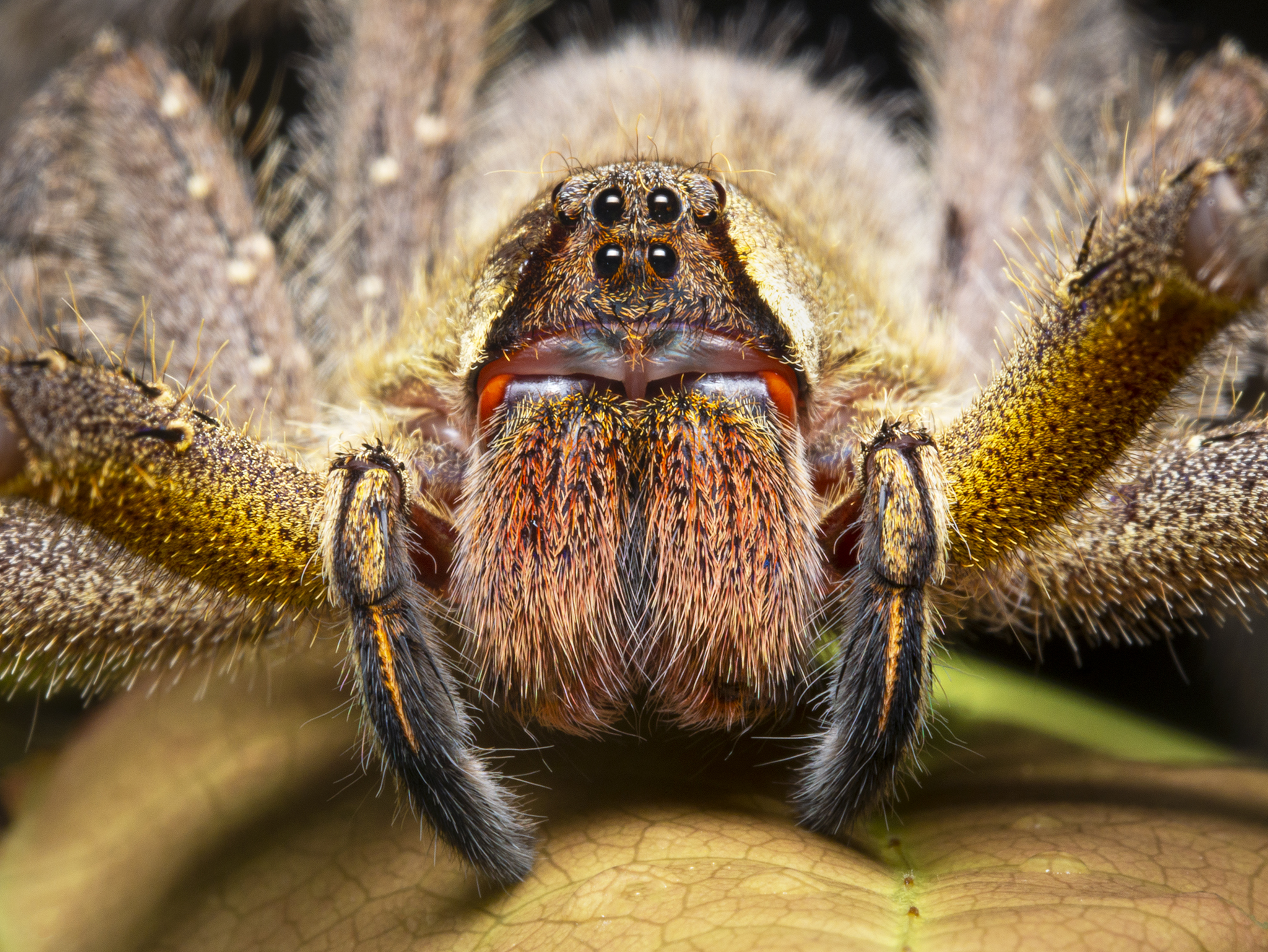This here is definitely one of those LOOK but don’t TOUCH kind of spiders…
Say hello to the Wandering Spider. While absolutely beautiful at close range, I certainly wouldn’t recommend ever getting near to one of these spiders unless you know what you’re doing.
Wandering Spiders have some of the most potent venom of any spider in the world – and not only that, they’re not afraid to use it.
Their name comes from their tendency to wander the rainforest floor at night, and they will readily bite if disturbed – often raising their front legs in the air and using their bright colours as a warning sign that they are not to be messed with.
Like any spider, they’re not aggressive – they won’t attack you for no reason – which is why I was confident getting close enough for this photo. But that doesn’t mean that plenty of people aren’t getting bitten by Wandering Spiders.
Most bites tend to occur from accidental disturbances, and unfortunately for humans, these spiders have a proclivity for hiding in cool, dark places like unattended clothing, boxes and shoes. A bite doesn’t always mean that venom is delivered to the victim, but if it is, the consequences can be very serious.
Hospitalisations regularly occur – most often in Brazil where Wandering Spiders are found in built-up areas – and the effects of the venom can include irregular heart beat, increased blood pressure, vertigo, fever, visual disturbances, vomiting, and difficulty breathing. In rare cases, paralysis and even death has been recorded, most commonly in small children.
Wandering Spiders should be approached with the utmost caution and respect, but if done so, they are some of the most stunning spiders that will ever grace the end of a macro lens.
–
Wandering Spider (Phoneutria boliviensis), Reserva Nacional Pacaya Samiria, Peru


